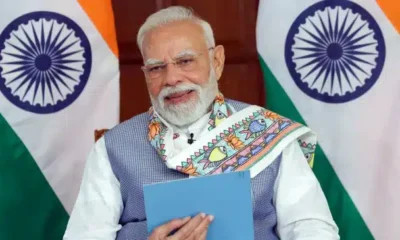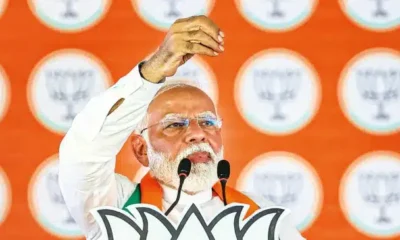
|
Getting your Trinity Audio player ready...
|
(The article was originally published in Indian Express on May 17, 2025 as a part of Dr Madhav’s column titled ‘Ram Rajya’. Views expressed are personal.)
Prime minister Narendra Modi’s warning to Pakistan that the outcome of any future misadventure – “casting an evil eye towards India” — would lead to “destruction and total annihilation” must not be taken lightly by that country. The power asymmetry between the two countries has been clearly established in this conflict with India busting many delusions that the Pakistan Army had entertained over decades, like the so-called strategic depth and nuclear blackmail.
When India decided to engage with the Taliban regime in Afghanistan after it took over in 2021, many eyebrows were raised in the strategic community. But strategic diplomacy that India developed with that regime resulted in Pakistan failing to capitalise on its old friendship that gave rise to its illusion about the so-called strategic depth. Officials of India and Afghanistan are engaging with each other on a regular basis over last several months. In early 2021, India had entered into a Memorandum of Understanding (MoU) with the erstwhile Ashraf Ghani regime for the construction of the Shahtoot Dam on the Maidan River near Kabul that would help provide clean drinking water to over 2 million residents and irrigate millions of hectors of agriculture land. After Salma Dam in Herat province, this would be the second major dam project that India was to undertake in that country.
Ignoring Pakistan’s flimsy protestations, India and Afghanistan went ahead and even discussed about additional projects on Kabul and Kunar rivers. Regime change in Afghanistan pushed this agreement into a temporary limbo. India is now discussing about its revival with the new regime in Kabul.
The Pakistan Army had clandestinely supported the Taliban for many years and sincerely hoped that with their capturing power in Kabul, it would once again acquire the required strategic depth in dealing with India. But things did not go as expected for the Pakistan Army in the last couple of years. Far from becoming Pakistan’s backyard, the Taliban regime actually became a military challenge on the Western front with regular clashes taking place between the two sides. In the recent conflict with India, Pakistan clearly saw Afghanistan not coming to its rescue.
Loss of support from Afghanistan means Pakistan cannot go far beyond Islamabad on the West because the entire North-Western region, from Khyber Pakhtunkhwa to Baluchistan remains lawless and restive. Not a single week passes without Pak Army losing its men in clashes with militants in the region. That effectively means that for securing its strategic military and nuclear establishment, Pakistan cannot go far too deeper into its West. Far from securing strategic depth, Pakistan ended up with strategic shrinking. India conveyed this reality effectively by targeting the Nur Khan Airbase located in Chaklala, some 350 KMs away from its border. Nur Khan airbase is Pakistan’s most strategic asset housing several important air squadrons and also the entire management of its nuclear arsenal. It is less than 15 miles from Pakistan’s military headquarters and the prime minister’s office.
That brings up Pakistan’s other delusion about nuclear deterrence. Unlike India’s “no first use” doctrine, Pakistan explicitly says that it follows “first-use policy” against India when faced with any existential threat. The Pakistani military and political regimes relied on this blackmail for a long time hoping to deter India. But prime minister Modi made it clear that “India will not tolerate any nuclear blackmail” and warned Pakistan that through the Operation Sindoor, “a new line, new benchmark and a new normal has been drawn” against Pak-sponsored terrorism. What he meant was that India would not hesitate to attack deep inside Pakistan territory, a scenario in its nuclear doctrine that allows it to use the nukes. By announcing that the Indus Water Treaty would be kept in abeyance, India called Pakistan’s nuclear bluff, as cutting off of the water lifeline by India was another clause in its doctrine for using nukes.
India is also a major nuclear power. Its doctrine categorically states that it will respond to any nuclear misadventure against it in a “massive and designated to inflict unacceptable damage”. That eventuality notwithstanding, given the loose talk of the Pakistani leadership, it is time the world reviewed whether the nukes are safe in the hands of the Pakistani regimes.
In this conflict, India fought not just against Pakistan but the combined force of Turkey and China. Pakistan extensively used technologies and weapons supplied by the two countries in the conflict. Turkey’s role went beyond military support. As the founding member of the ill-famed Organisation for Islamic Cooperation (OIC), it got the body to extend full support to the rogue acts of Pakistan. Turkish President Erdogan even questioned India’s decision on Indus waters forgetting that his own regime in Ankara denies waters of Tigris and Euphrates to downstream countries like Syria and Iraq on the facetious argument that “Syria and Iraq had no more right to Turkey’s rivers than Ankara had to their oil”.
For India, the involvement of China and Turkey in the conflict should serve as a warning. Turkey brought in superior drone technologies like attack drones, that were used extensively by Pakistan in this conflict. They are cheap compared to the Polish, American and Israeli ones India uses. They were also well-tested since 2019 in several conflicts including Syria, Libya, Nagorno-Karabakh, and recently in Ukraine. This conflict gave China also an opportunity to test its advanced defence technologies against sophisticated Indian and Western weapon systems. India responded effectively by deploying indigenously developed missile technologies like Akash and BrahMos besides using Russian and Israeli technologies. While Make in India has proven its worth, accessing best available technologies from all over the world for our defence forces too should be a priority.
Because one important take home message from this conflict is that the age of ground combats and aerial dog fights is over and the era of high-tech warfare deploying unmanned weapon systems has come knocking at our doorstep.




